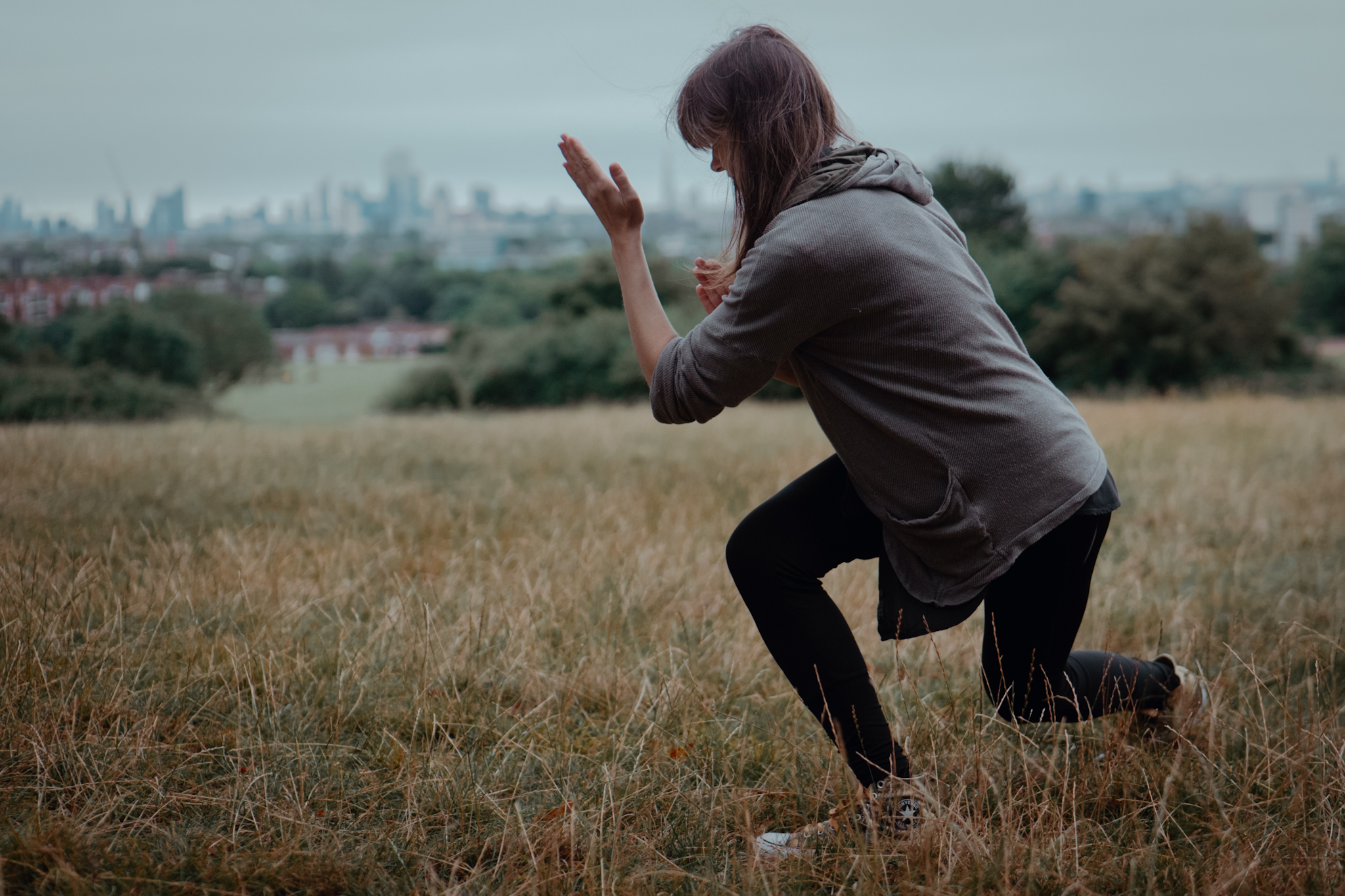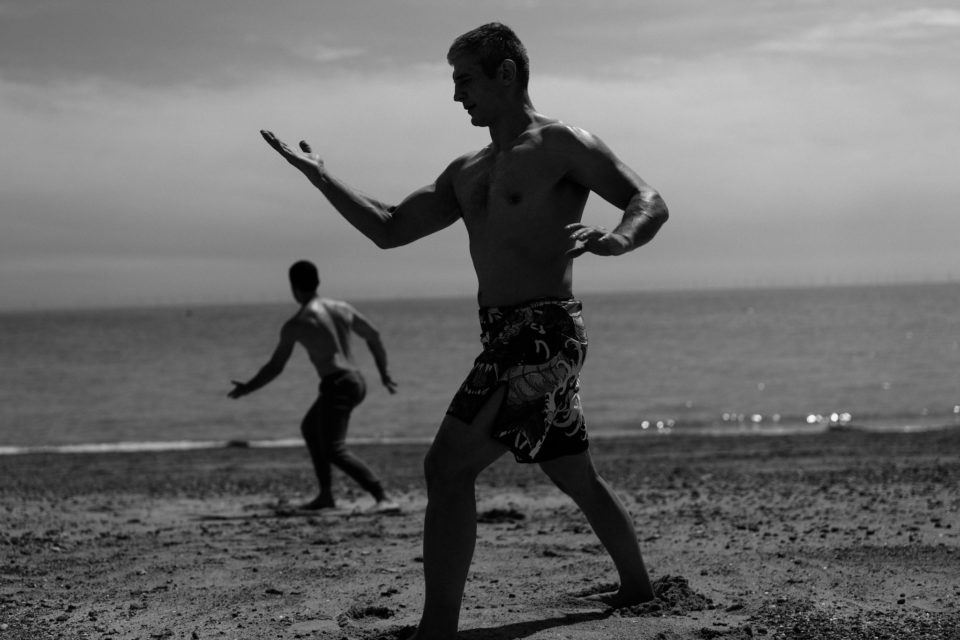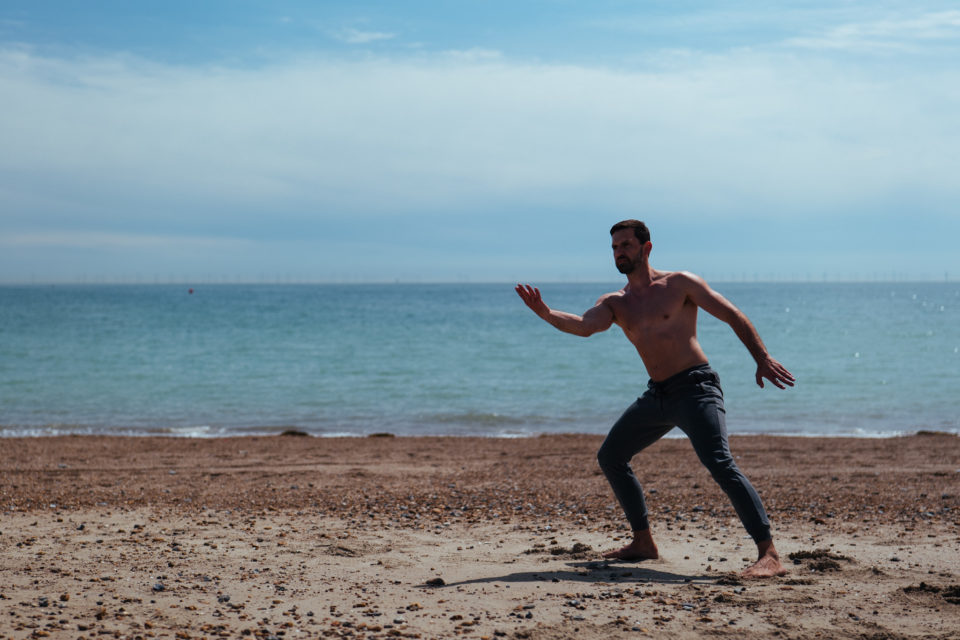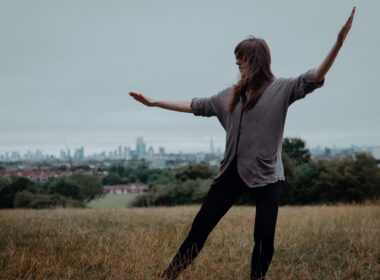Should you take up Tai Chi or Yoga?
Since the mid to late 90’s Yoga has become a very popular fitness class or activity for many people. It’s popularity seems to have grown steadily since then and can now be found in purpose built studios and fitness centres everywhere. Tai Chi on the other hand, was very popular in the early to mid 90’s and it’s practice (as a serious art/martial art) appears to have diminished considerably in the UK.
This has often led me to consider why this is, and do all these people have a point. does yoga offer more benefits than a full system of traditional Tai Chi? Or is it just another example of people following trends and fashions, driven by prime movers in the media.
In this short article I’ll look at what I understand to be the benefits of both Yoga practice and Tai Chi Chuan and we will find out which one has more potential to develop the practitioner.
Full disclosure: I have never practiced any Yoga, and do practice and teach Tai Chi, so I am hugely biased in the first place. But, I have observed hundreds of classes over the years so can make an educated guess as to overall benefits etc.
There are many different approaches to Tai Chi and Yoga
If you go to any Yoga studio, you will see that there are many different approaches to it’s practice , with modern developments and movements arising constantly. Originally the practice of Yoga asana’s (postures) was designed to prepare the practitioner for deeper levels of meditation and to provide the physiological basis for stillness.
In the west it appears that Yoga is now primarily practiced via asana’s and in some cases pranayama (breathing methods). The objective in many classes appears to vary from being more focussed on developing an aesthetically pleasing physique, through to achieving a level of deep relaxation. This modern focus on the external appearance is probably in stark contrast to the original aims of the overall all practice of Yoga, which included many other things beyond asana practice and breathing exercises.
Tai Chi practice has also shifted considerably in most cases in the modern era, away from it’s original martial roots. Only the softer ‘yin’ elements are mainly practiced nowadays, even by most ‘serious’ practitioners. They will often spend a lot of time on refining forms and postures, though rarely delve deeply into the more traditional martial arts practices, which include a lot of dynamic work. In the article the Tai Chi practice I will be referring to is the Wudang style of Tai Chi, which in some places still retains all the dynamic practice and training, that brings the practitioner many more potential benefits
Major Yoga approaches
- Anusara
- Ashtanga
- Bikram
- Hatha
- Hot Yoga
- Iyengar
- Restorative
- Vinyasa
Main Tai Chi styles
- Chen Style
- Yang Style
- Wu Style
- Wudang style (focus of this article)
 Developing your strength, power and physique
Developing your strength, power and physique
Some approaches to Yoga practice, appear to be very good for developing an aesthetically pleasing and strong physique. It seems that some yoga systems emphasis a more gentle asana practice, whilst others string many together in a kind of circuit training approach. This would help you to develop decent levels of muscle endurance and conditioning. Additionally some styles train their adepts in holding difficulty balanced positions where a lot of physical strength and body control is required to do so.
The strength developed in most of the approaches that I have seen, is a kind of slow and controlled strength. I wouldn’t expect it to directly translate to more physical ‘power’, as the speed component is generally missing.
Tai Chi practice often begins with forms training. This type of training when done properly will considerably improve lower body strength to pretty significant levels, if stances are trained in the ‘low frame’ manner. Core and trunk strength also naturally develop from these types of posture and form exercises.
Internal strength training includes a wide variety of isometric holds that systematically target and strengthen the entire body, including the legs, back and core, shoulders and arms. Additionally there is dynamic tension training that can take strength and muscle control to the highest levels. Certain exercises are designed to help convert strength gains into functional, whole body power, with fast whip like actions.
Training with heavy weapons was traditionally used to develop strength and power across the whole body and is done with heavy sabres and heavy spears. This is a kind of strength and power that directly links the strength and power of the legs, the various muscles of the core and the muscles of the shoulders and arms – true whole body force.
There are also auxiliary exercises where weights are used to develop strength and endurance of the arms, and handstands are used to develop upper body power in additional ways.
So in the quest for strength and power, as well as a well developed physique, I would have to say that both Yoga and Tai chi score very well. The wudang system of Tai Chi however, has many tools that can be practiced to achieve the highest levels of practical strength and power so i give it an advantage. Of course, for a good physique to arise in either case, a good and appropriate diet has to be followed.
Yoga: 7
Tai Ch:i 10
Winner: Tai Chi Chuan
Cardiovascular fitness and stamina building
There are essentially two types of aerobic endurance (if we don’t include exercise economy) which are central and peripheral. The central endurance comes from the ability of your heart and lungs to deliver oxygenated blood and the peripheral is the ability of your muscles and tissues to accept and use it and process it.
VO2max is the variable associated with the central endurance capacity and can be developed in a few different ways. VO2max has also been found to be the fitness variable most correlated with longevity, so if you are training for health this should be considered. Also to be considered is the fact that it’s related to your weight and body mass.
Yoga training has been found in studies to have a little improvement in VO2max, but not that much. This is because it’s method of practice, whilst targeting and developing a good amount of peripheral muscle endurance, doesn’t target the heart and lungs that effectively. In the stretching focussed approach to Yoga this would be even less, though in the circuit training approach you would have more chance of developing this aspect of your fitness.
Tai Chi forms training (the slow practice) has been shown to develop VO2max effectively and significantly. This is because very large muscle groups of the body are under a reasonable amount of ‘challenge’ for around 20 minutes in most cases. This provides plenty of stimulation for heart and lungs.
Higher intensity partners drills, such as seven star step, Da Lu, Nine palace and gather the wave provide a pretty intense challenge to the heart and lungs and would be expected to develop very significant improvements in VO2max. The practice of the demanding weapons forms also provides a very direct way to stimulate the central endurance aspects. The fighting syllabus includes plenty of other aspects which would definitely condition your cardiovascular system to the highest of levels. Things like high intensity interval pad punching (a completely traditional practice) which is done whilst running, is an almost ideal form of interval conditioning for the heart and lungs. Practice of throws (repetitious lifts of other humans), wrestling and sparring also directly develop central and peripheral endurance. Pushing hands practice is also cardiovascularly intensive.
So overall we can say that Yoga develops pretty good levels of muscle endurance when practice in the more modern circuit style. This approach is incidentally used by Kushti wrestlers in India, and became popular with japanese wrestlers at some point. Central cardiovascular development however is limited.
For Tai Chi practitioners, if you only practice the slow form, you will also gain some significant but modest developments in cardiorespiratory fitness. If you take part in the more dynamic aspects of the martial syllabus, you can develop your ‘Qi/fitness’ to the highest levels.
Yoga: 5
Tai Chi: 10
Winner: Wudang Tai Chi Chuan
Tai Chi and yoga for flexibility improvement
Yoga asanas are excellent ways to improve flexibility, and appears to be where yoga absolutely shines. an incredibly complex and varied system of stretches, yoga gives you the ability to develop incredible levels of flexibility across all possible movements.
Tai chi in most cases is a more simplified system of stretching. Focusing on mobilising the spine gently in flexion, extension and rotation. It develops flexibility of the shoulders and hip joint as well as the muscles of the legs, with various form movements that are designed to do so. The emphasis on flexibility training varies from school to school however, and is often not focused on enough. The tools are there for high level development, it just often isn’t emphasised as much as it perhaps could be.
Some fitness and sports thinkers do put forward the idea of too much flexibility in certain movements, which can reduce the effectiveness of the body for producing and absorbing force. This is probably why Tai Chi practitioners, train flexibility in a slightly less intense way than their yogic counterparts.
So a clear winner in this category is Yoga, though it should be noted that yoga derived injuries are on the rise, and practitioners should be very careful with excessive and aggressive stretching, particularly of the spine.
Yoga: 10
Tai Chi: 8
Winner: Yoga
Coordination, balance, body awareness and control
Yoga trains people in very precise alignments (when done well) and helps to develop excellent levels of posture control and body awareness. This appears to be in a mainly static kind of way however, with hand and eye coordination not receiving too much development.
Tai Chi training teaches very precise postures, but also movement within and between postures, that is refined and perfected. Hand and eye coordination receives a lot of development from practicing pushing hands partner drills, self defence techniques and freestyle pushing hands, wrestling and sparring.
In both systems balance is well developed, again yoga’s balance is perfected in a more static format, whilst Tai Chi does static and also dynamic. Additionally many of the more complex forms (weapons) feature very precise and intricate spins, pivots and twists where we need to maintain perfect posture control, balance and awareness of position.
So this is a category in which both Yoga and Tai Chi excellent, though again I’d give a clear advantage to Tai Chi training, though only when a full martially focussed syllabus is trained.
Yoga: 7
Tai chi: 10
Winner: Wudang Tai Chi Chuan
Timing, distance awareness, interpersonal awareness and sensitivity
As far as i know, there is not a lot of interpersonal interaction in a typical yoga class, apart from pre-and post socialisation. The actual training within yoga practice appears to be complete individualistic.
Tai Chi on the other hand is 50/50. There are practices designed to get you to ‘know and master yourself‘ and practices designed to ‘know and harmonise‘ with others.
Practicing pushing hands footwork drills with a partner requires you to ‘ting/listen’ for the movements of your partner and to completley harmonise your own movements with these. You must read and precisely harmonise with their distance, their timing and also the strength of their techniques and movements. Other pushing hands drills allow you to focus very precisely on ‘listening’ for the physical forces issues by your partner and to then use subtle and minimal force to redirect it. This builds very subtle sensitivity over time to the intentions of a partner or ‘opponent’.
Timing is useful for any physical or sporting activity. Distance perception and awareness is also. Sensitivity to people, changes in situations in physical situations (and non physical) is a tremendous advantage in all sorts of ways. Fundamentally this is Yin/Yang theory made practical – mastery over self and perfecting/harmonising relationships with others – in conflict and non-conflict situations.
So because Yoga training has no partner work to develop these variables, which are useful and important for physical development, the winner is martial, partner based Tai Chi training.
Yoga: 0
Tai Chi: 10
Winner: Wudang Tai Chi Chuan
Relaxation, stress reduction and tranquility
Yoga and Tai Chi are both practiced by many people as a form of relaxation and stress reduction. In many ways Yoga is the more immediately accessible and more effective in the fist period of practice. The right yoga class, where the postures are gently and stretches not excessive can quickly produce feelings of relaxation. Additionally correct pranayama training can add to this to high levels. It’s important to learn this from a proper source though as it can be dangerous.
In Tai chi you have to initially spend more time learning the different elements of the art, with much of it practiced whilst being in a standing position, which isn’t as immediately relaxing.
However with time a Tai Chi practitioner learns to adopt new nasal/diaphragmatic breathing, learns to ‘song/let go’ of physical tensions in their body and develop a calm and tranquil attitude . As training develops, standing meditation postures are learned, in which the perfect balance between physical and mental activity and relaxation is found. Repetitious movement patterns are practiced, which help to cultivate a very profound sense of ease a tranquility, which when combined with prolonged use of the static meditations can produce an extremely tranquil state.
This mindset and state, which is slowly freed from layers of acquired thinking and conditioning, is applied to various elements of partner practice, including intense pushing hands and self defence drills and training.
The idea is to get to the point of achieving ‘stillness in motion’. This means that no matter how challenging, dynamic or stressful a given environment is, we remain completely calm and centred. So whilst there are many solo standing and some seated meditational practice es within Tai Chi training, the objective is to bring the tranquility cultivated there, into the more dynamic requirements and challenges of the real world.
So both Yoga and Tai Chi are tremendous for relaxing and de-stressing, with yoga being more easily accessible in the early part of the training. Over the longer term, I believe Tai Chi offers a practitioner greater scope for carrying their tranquility with them into world activities and tasks.
Yoga: 8.5
Tai Chi: 10
Winner: Wudang Tai Chi Chuan
Self defence skills and personal confidence
Yoga isn’t a martial art so we can only consider it for personal confidence in this category.
Most schools of Tai chi don’t teach proper self defence in any meaningful way either, so in the main can’t be considered. What we can look at is the effects of learning proper self defence in a practical and well developed way, and why it might be beneficial.
In the Wudang system of Tai chi some schools (such as min) still place a lot of emphasis on the traditional approaches and methods of self defence training. This is because not only are they fun and enjoyable to practice, they also provide a lot of the physical benefits as noted in the paragraphs above. Training in a practical system of self defence, which includes all manner of striking, grappling and weaponry can refine our physical and mental skills, provide us with endless ways to challenge our physicality and character, as well as developing humility and honesty. Moreover, having confidence in your ability to handle yourself in a physical confrontation can allow you to exude and be far more confident in most aspects of everyday life.
Personal confidence comes from facing down challenges, imposing yourself physically and in character/discipline. Therefore I feel both Yoga and Tai Chi when well practiced can be a tremendous boost for confidence and self esteem. This is something I have seen many times in observing the development of many students of the years of teaching.
Yoga: 5 (confidence through self cultivation)
Tai Chi: 10 (through self cultivation and self defence)
Winner: Wudang Tai Chi Chuan
So which should you practice, Yoga or Wudang Tai Chi?
As I stated at the start of the blog, I am a little biased, being a non-yoga practitioner. However, what I feel is that in the case of both Yoga and Tai Chi, many of the modern approaches to practice are probably far from the original intentions of the old masters.
There is a lot of superficiality it seems in both, with a primarily ego-fuelled, image conscious marketing drive that has propelled yoga’s popularity. People with fit bodies in skin tight lycra make it appealing for both sexes to be a part of, though it’s very unlikely that the approach taken will help practitioners seek out what the originators were attempting to achieve – which is likely to do with loss of ego/ambition etc.
So overall I think both arts can offer you tremendous benefits in practicing them, though I do feel that for the average modern, city dwelling individual, a really good Tai Chi club that practices Tai Chi as a full martial art could give you a little extra.







 Developing your strength, power and physique
Developing your strength, power and physique



Yes, the social interaction with Tai Chi is way better than what occurs in Yoga. My question involves the origin of Tai Chi? Are we sure it started as a martial art? Seems in my quick look over if wiki, there is no clear history delineation?